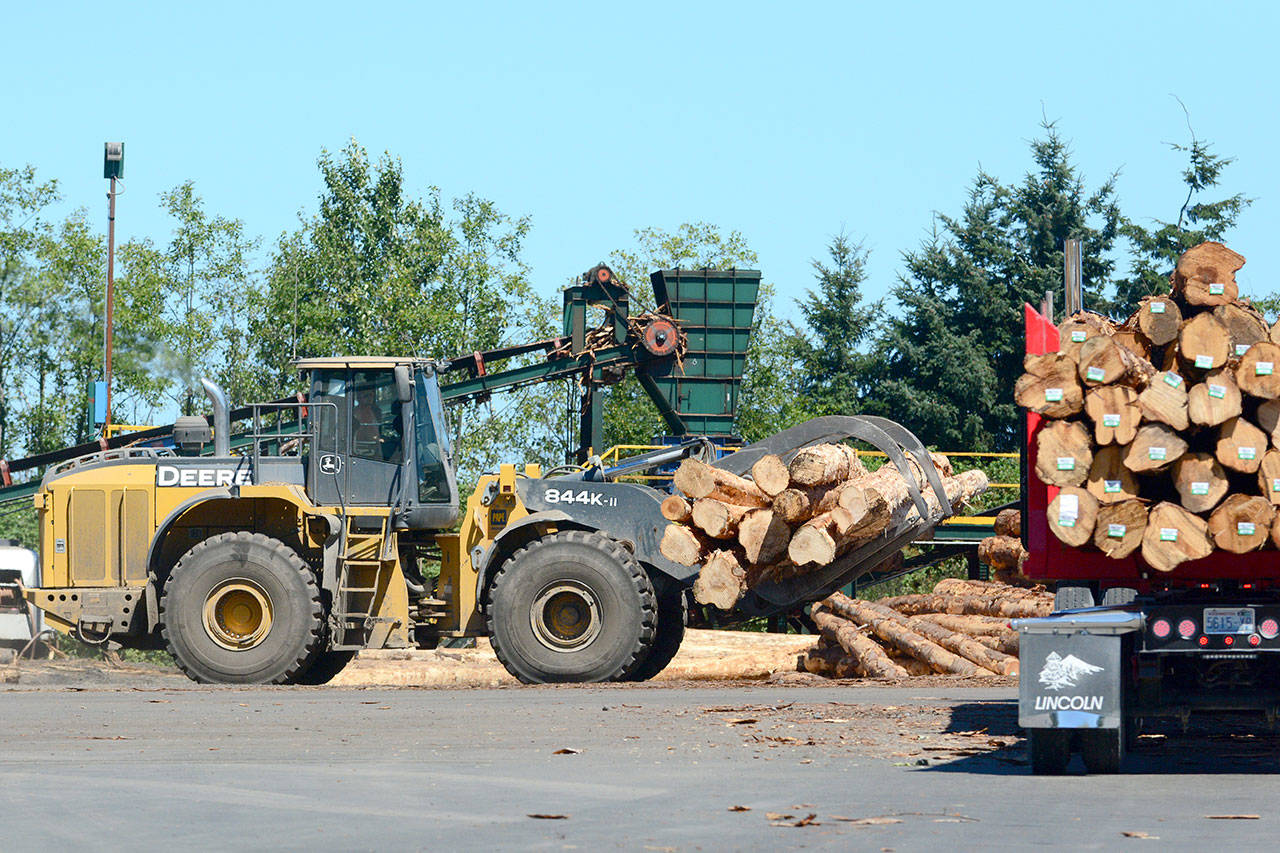PORT ANGELES — The Port of Port Angeles hopes to see an advanced wood products business move to Port Angeles.
Cross-laminated timber (CLT) and other advanced wood products are widely used in other nations and now the United States is just starting to catch on, said port Commissioner Connie Beauvais. Her hope is that as companies move toward producing advanced wood products, one of the companies would move somewhere in Clallam County.
“There’s still a lot of things that have to come together, but I think there’s going to be room for Port Angeles to be there,” she said.
Cross-laminated timber is made by gluing multiple layers of lumber together while alternating the grain and is often used in multi-story buildings.
The port is trying to make the case for an advanced wood products company to move to the Port Angeles area and is preparing a feasibility study that would provide the information needed to know if moving to Port Angeles is a good idea.
“What we’re looking at is to say what assets do we have on the Olympic Peninsula that lend themselves to what type of advanced wood products … that would be the best fit for the types of resources that we have,” said Karen Goschen, the port’s executive director.
The port is preparing to apply for a state Community Economic Revitalization Board grant that would fund about $50,000 of the study. The port expects to provide a 25 percent match of $16,667 for the study.
The port should know by September if the grant was approved, Goschen said. If approved, the grant will be awarded in the fall.
A University of Washington, Washington State University, Heartland and Forterra study published in December found that by 2035 the Pacific Northwest should be able to support at least four small- to mid-sized CLT plants producing 20,000 to 50,000 cubic meters each per year.
“Given the wide mix of wood species and lumber grades that can be used in CLT production, it ideally would create a market for less desired/valued types and species, such as small-diameter timber harvested for fuels reduction or other ecological restoration objectives — encouraging responsible management of previously harvested forests,” according to the study at http://tinyurl.com/PDN-CLTstudy.
Goschen sees Port Angeles as a unique location for an advanced wood products manufacturing because of the potential relationship with the Composite Recycling Technology Center.
There’s potential to pair the recycled carbon fiber from the CRTC with the wood products to increase strength and prevent more scrap carbon fiber from going to landfills, she said.
If it turns out it’s not economically viable for a private business to operate on its own, Goschen sees potential for a public-private partnership, she said.
She said that if Clallam County timber is used to make CLT, there is more of an opportunity to better manage and to thin unhealthy forests.
“With that combination of improving our forests combined with making products, we’re looking at a different financial return,” she said. “Here it might be a public-private partnership because there is some community benefit that is not financial.”
Goschen said the demand for advanced wood products is growing, but the industry is facing hurdles as more buildings are built with CLT.
Among the hurdles, she said, is that under the 2015 International Building Code, CLT is not a standard building material and needs to be tested for each building that is proposed for.
“Building codes really need to be updated to allow for standard types of construction with cross-laminated timber,” she said.
With building codes currently there is a degree of risk when designing a building with CLT and adds more time to get through the permitting process.
Another hurdle is the state Department of Natural Resource’s inability to meet the sustainable harvest levels the department sets, she said.
Approval of DNR’s 2015-24 sustainable harvest calculation and long-term conservation strategy for the marbled murrelet has been delayed through 2018.
“Another important element is the work the port is doing with the Department of Natural Resources to help them understand the importance of setting a sustainable harvest level and actually meeting that sustainable harvest level,” Goschen said. “Private companies would be making investments relying on their wood supply that would come from DNR land.”
Beauvais agreed.
“Setting the sustainable harvest level is one thing, but then they need to meet it every year because a company really needs 8 to 10 years to make a business plan to work,” Beauvais said.
________
Reporter Jesse Major can be reached at 360-452-2345, ext. 56250, or at jmajor@peninsuladailynews.com.

